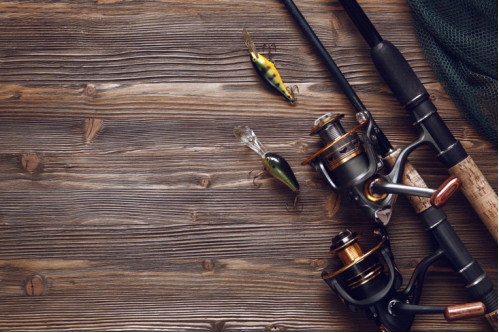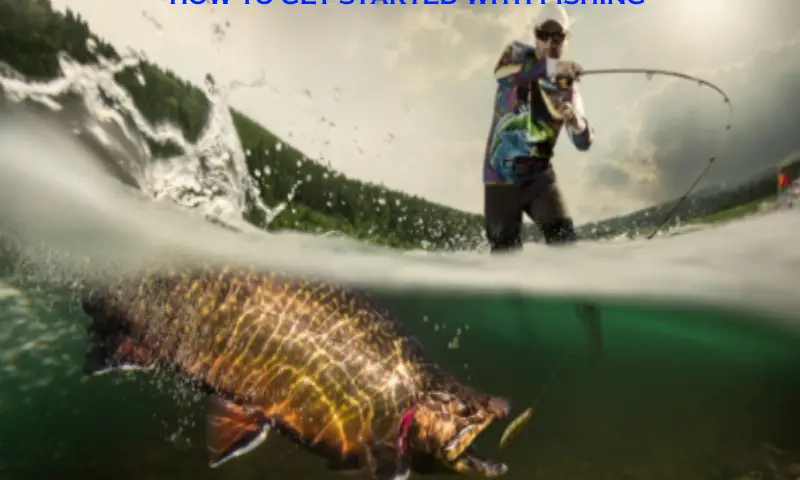Although most of our readers live in the big city, I always recommend spending time outdoors and learning a survival skill or two. Even if nothing happens, you’ll have a relaxing time, and learn to find food for the family in the outdoors. Last month, we featured getting started with hunting. This month, we take a look at fishing as a hobby.
How To get Started With Fishing
Written by Lisa
Summertime is finally here; it’s now time to go for an outdoor experience. What better way, is there, to spend quality time with family or friends than to go fishing? If you have never been out fishing before, I will outline some basic steps that will guide you on how to get started with fishing.
Before we delve into the basics for a novice angler, I will describe the tools, gear or equipment that you need to arm yourself with before going fishing. The type of fishing gear that you need to include:
• Spinning rod and reel
This pole is recommended for novices as it is easy to cast. It also can handle fish of up to 20 pounds. The next question is, which length of the rod is ideal for you? Choose a rod of length 6ft 6′. It is perfect for teenagers of all sizes; but if you have a small body than others, you could try a rod of length 5ft 6in.
Using a longer rod will allow you to cast further. It will also make it easy to lay with the fish.
• Fishing Line and Hook
Keep it simple. You only need to buy a small spool of monofilament line. When you are fishing different waters, you will need to use different lines of varying strength. It is, therefore, prudent to know which type of water you will be fishing.
A 6-8 pound test monofilament line works best in freshwater, while a 10-12 pound test is suitable for salty water. This line is more durable and easier to handle than the other lines available.
Carry with you an assortment of hooks of different sizes, from size 2 for the small baits to up to size 6. Size 1 hooks are good for catching catfish and bass while size 3 and above are perfect for using bigger bait.
Which type of hook is suitable for a beginner? As a beginner, you may find it difficult to set your hook once the fish strikes at the bait. But, with time and practice, you will get better. For starters, use round hooks.
These hooks are easy to remove, and you don’t have to set them, the fish will do the work for you.
• Other essentials include:
Needle nose pliers to help you take out the hook from the fish. Small bobbers, the smaller the bobber, the easier it will be for you to detect a strike. As for baits, you can either use a live or artificial lure that you can find in any bait shop.
Fishing license: consult with your area laws on whether you need a permit to fish. The laws vary from one place to another and sometimes it is based on the age of the person who wants to fish.
Carry some split shot weights, small tackle box if you will be fishing from the shore, scissors for cutting the line and don’t forget to bring along some sunscreen. Water reflects the rays of the sun, and you are more likely to get sunburns from fishing.
Well, now that you have the right gear with you, what is the next step? Here are a few basic steps that you will need to familiarize yourself with to improve your angling skills. That is if you will want to keep fishing after your first expedition. The chances are that you will.

Step 1: Identify the fish that inhabit your fishing waters
You need to know the different species of fish that you will be catching. With this knowledge, you will be able to refer to any regulations regarding a particular fish in that area and abide by the laws.
Step 2: Find a Good Fishing Spot
Becoming a great angler is not just by casting your line in any place and hoping to get some fish. It is more about knowing fish can be found and fishing the right spot. You can ask around for guidance.
During the spawning season, fish can be found in large numbers around the dock or areas with vegetation cover.
Step 3: Learn the different fishing knots
Knowing which knot to tie is vital in fishing. You could start by learning how to tie a double uni-knot for joining your line. And also find out how to tie an improved clinch knot. This knot is ideal for tying your leader to the hook.
Step 4: Step up your Fishing Rod and Get Fishing
You can watch the YouTube video below to learn how to set up your fishing rod. Once the gear is set, and you are at the right fishing spot, cast your line and wait for a bite. You need to be patient as fish take some few minutes to find your bait.
If you have attached a bobber to the line, which you should as a beginner, keep an eye on it for any movements. When a fish is nibbling at your bait, the bobber will jump or shake. When the bobber sinks, set the hook then swing the rod, so the fish swings towards you.
Remember to handle the fish with care as they have spiny fins that prick.
Conclusion
If you have always admired the anglers on the shore or have been watching how to fish videos and promised yourself to learn how to fish, here is a tutorial to help you get started. Find out more about the fishing rules and regulations in your area.
What type of fish can you catch and what type are only for catch and release. Get a fishing license if you must have one for you to catch fish in that area. Buy the right fishing gear combination and when it is raining remember to bring the appropriate rain gear for fishing.
Find the perfect fishing spot, is it around the docks, near particular places on the shore, etc.? Set up your equipment correctly and get fishing.
Author Bio:

I’m Lisa. I have a strong understanding and passion for all things related to fishing. When I am not out wetting a line, I am sharing a range of tips and tricks on Fall For Fishing – to help others to snag their big catch!

